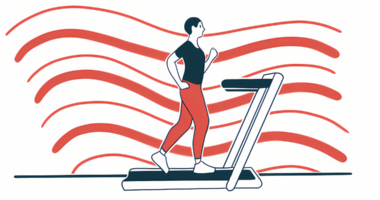‘Multifactorial’ approach may be needed to prevent falls in MS: Study
Researchers surveyed 965 adults who reported on their fall-related outcomes

The risk of falling among people with multiple sclerosis (MS) seems to be associated with a combination of personal, environmental, and activity-related factors, according to a large U.S. survey.
Personal factors included poor balance, muscle weakness, and fatigue. Surface conditions and distraction made up environmental factors, while work-related factors included a sense of urgency to complete a task or multitasking. Being concerned about falling was also a significant contributor.
Preventing falls in MS requires a multifactorial approach that should target improving several of the modifiable factors associated with a greater risk of falling, according to “Examination of risk factors associated with falls and injurious falls in people with multiple sclerosis: an updated nationwide study,” which was published in Archives of Physical Medicine and Rehabilitation.
Impairments in balance and walking, along with muscle weakness and cognitive decline, make falls a common concern for people with MS. Along with injuries, falls can negatively impact quality of life in several ways, such as reducing participation in social activities, restricting activity levels, and inducing a fear of falling.
Factors that lead to a fall
Identifying the factors associated with falls can help ensure preventive interventions are set in place to reduce their risk, according to a team led by researchers at the University of Michigan who surveyed 965 adult MS patients in the U.S. who were asked to report on their demographics, such as age and sex, clinical data, and fall-related outcomes.
The survey was conducted between March and June, and was available to patients enrolled at a university registry. It was advertised in a mailing list of the National MS Society and via www.UMHealthResearch.org.
The questions included the number of falls in the past six months, along with concerns about the risk of falling. Depression, pain, fatigue, and physical function also were evaluated.
Overall, 56% of the respondents said they’d fallen in the previous six months, and 30% had a fall with injury.
Compared with patients who hadn’t fallen, those who fell had significantly more depressive symptoms and pain interference, a measure of how pain interferes with daily activities. Fatigue also was more severe, while physical function was significantly lower.
Also, more patients with a history of falls said they were fairly or very concerned about falling, compared with those who hadn’t fallen.
What contributes to falls with MS?
When asked about the factors that contributed to their falls, the participants named balance (75%), muscle weakness (54%), and fatigue (35%) as the most common personal factors. Environmental factors included uneven ground/carpeting/surface condition (30%), other people talking (26%), and stepping up or down (14%).
Those who reported a link between falls and activities said urgent activity (35%), multitasking (27%), and the time of day an activity occurred (27%) most commonly contributed to falling.
Severe fatigue and pain interference were significantly associated with a higher chance of falling, statistical analyses showed. Being concerned about falling, even minimally, was significantly associated with a 2.78 times higher likelihood of a fall.
Strategies to prevent a fall “should be multifactorial and include personal, environmental, and activities-related factors,” the researchers said. “Particular attention on fatigue, pain, and concerns about falling may be needed to reduce incidence of falls and injurious falls in this population.”







